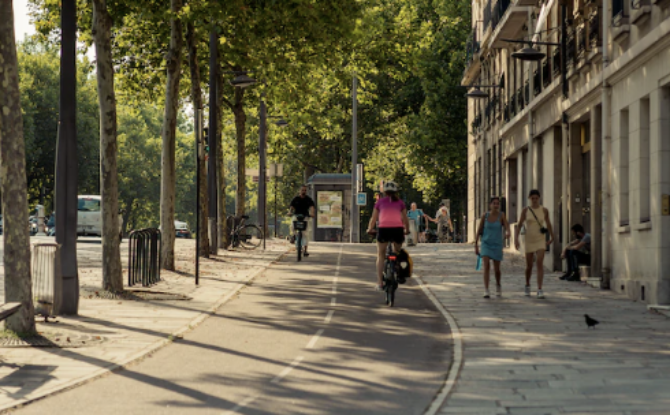
Developing Crash Modification Factors for Separated Bicycle Lanes
From Highways.dot.gov
In 2020, the United States had 938 bicycle fatalities due to roadway-related crashes.(1) As bicycle use increases, transportation agencies are tasked with determining the optimal location and configuration for constructing on-road bicycle facilities. Several bicycle lane configurations are available, including the traditional bicycle lane, a buffered bicycle lane, and a separated bicycle lane (SBL). Recently, many U.S. transportation agencies have started implementing SBLs—also known as protected bicycle lanes—as a safety enhancement. Figure 1 provides an example of an installation. SBLs provide a bicycle lane that is separated from the adjacent motor vehicle lanes by including both a buffer and a vertical element between the motor vehicle lanes and the bicycle lane.
STUDY OBJECTIVE
The large number of bicycle-involved collisions demonstrates the need to prioritize analyzing and enhancing the safety of bicyclists. In recent years, transportation agencies have constructed a variety of bicycle lane configurations, including SBLs, yet the associated influence that an SBL may have on reducing crashes has yet to be determined. This Federal Highway Administration (FHWA) project evaluated the safety effect for various on-street bicycle facilities. The research focused on the feasibility of developing a crash modification factor (CMF) for the placement of SBLs at roadway segment locations.
SITE IDENTIFICATION
The criteria established for a site to be included in this FHWA study are as follows:
- The study region, at a minimum, must include traditional bicycle lanes and SBLs.
- Data that can be used to estimate bicycle exposure must be available.
- Reported crash data are available for all bicycle-involved crashes, and the data must be multiyear data prior to 2020.
- The SBL configuration should be consistent throughout the study region.
- Site features, such as roadway cross-sectional characteristics and direction of travel, can be acquired from an online source.
